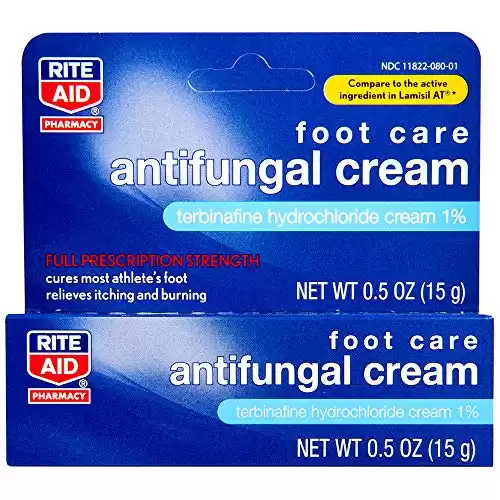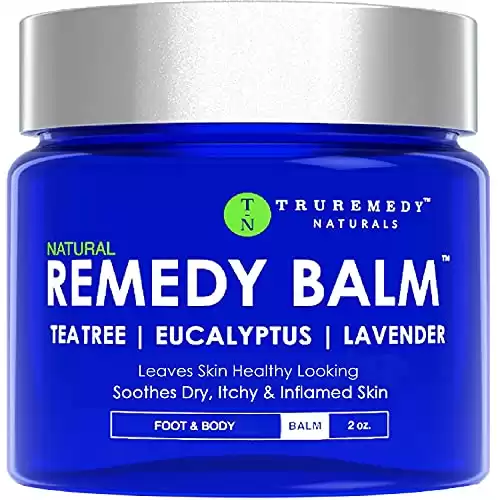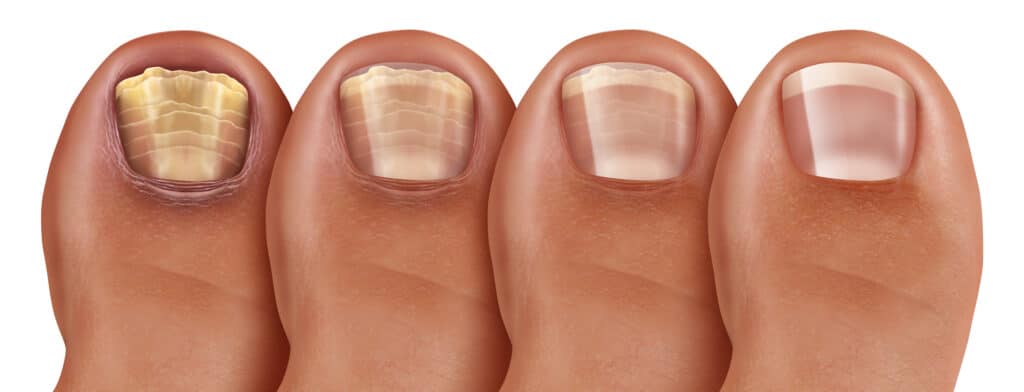
Apple cider vinegar (ACV) is a popular natural remedy with various potential health and wellness benefits. One of its many uses includes the treatment of toenail fungus, a common condition that affects many individuals. Toenail fungus, also known as onychomycosis, is characterized by discolored, thickened, and brittle nails, often resulting from fungal infections.
Utilizing apple cider vinegar as a treatment for toenail and nail fungus has gained attention due to its antifungal properties. Proponents of this natural remedy claim that the acidic nature of ACV can help lower the skin’s pH, thereby reducing the growth of fungi and effectively treating fungal toenails and nail infections. This alternative treatment usually involves applying ACV directly to the affected nail or soaking the nail in an ACV solution for a specified period of time.

Understanding Toenail Fungus
Toenail fungus, also known as onychomycosis, or foot fungus is caused by various types of fungi, most commonly dermatophytes, yeasts, and molds. It can be a stubborn and persistent condition that affects the nails, leading to discoloration, thickening, and eventually, nail breakdown.
Causes
Fungal infections can be contracted from various sources, such as public showers, swimming pools, and contaminated footwear. The fungi thrive in warm, moist environments, making our shoes and socks an ideal breeding ground. Additionally, age, weakened immune systems, and pre-existing medical conditions can increase the risk of developing toenail fungus.
Symptoms

Toenail fungus presents various symptoms, varying depending on the severity of foot fungus and type of fungal infection. Some common symptoms of foot and nail fungus may include:
Discoloration of the nail (yellow, white or brown)
Thickening of the nail
Brittle or crumbling nails
Foul smell
Distorted nail shape
In severe cases, the infection may spread to other toes, toenails, or skin, causing considerable discomfort and pain. This is closely related to athlete’s foot.
Prevention
Preventing toenail fungus is crucial as it can be challenging to treat once it sets in. Here are some preventive measures:
Maintain proper foot hygiene, including washing and drying your feet regularly
Avoid walking barefoot in public places, such as showers and pools
Choose breathable footwear and change your shoes and socks frequently
Keep nails trimmed and avoid using contaminated tools
By understanding the causes, symptoms, remedies, and prevention techniques, one can minimize and control the risk of toenail fungus and maintain healthy feet.
Apple Cider Vinegar and Its Properties
ACV is a fermented product derived from apple juice. It undergoes two fermentation processes; first, it’s fermented into hard apple cider, and then ACV.
Antifungal Effects
ACV exhibits both antibacterial and antifungal properties, making it a popular at-home remedy for toenail fungus. Its acidity allows it to fight against fungi and bacteria like Candida, which causes toenail fungus. However, it’s important to note that no study has conclusively proven its effectiveness on infections in the human body. The antifungal effects of ACV were only tested on Candida strains in lab settings.
Using Apple Cider Vinegar for Toenail Fungus
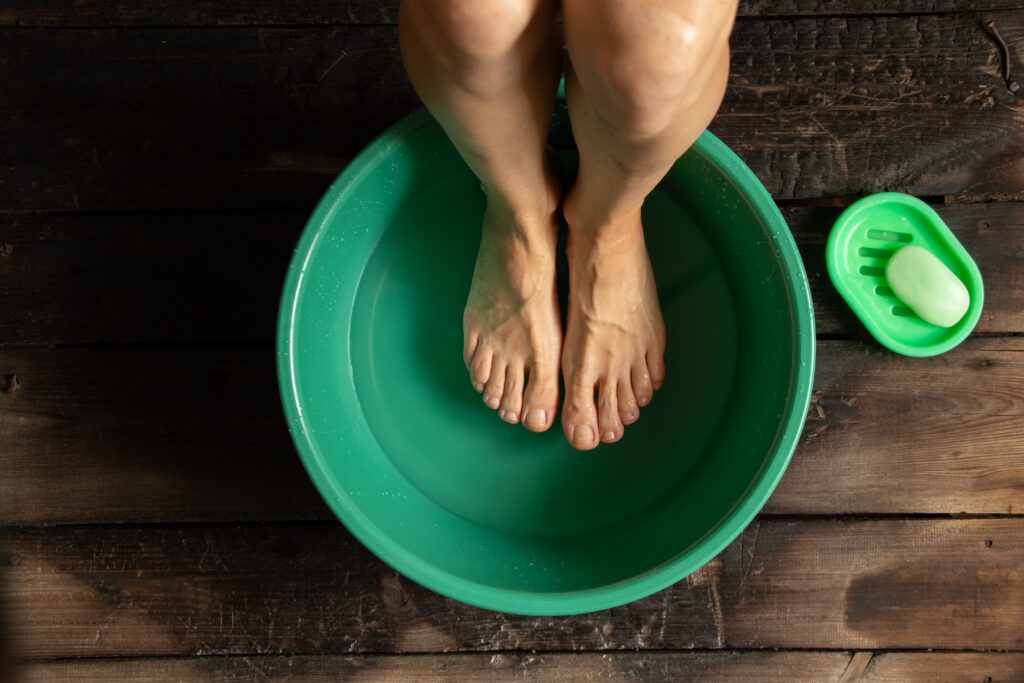
Methods of Application
There are several methods you can use to apply ACV to treat toenail fungus. Some of the most popular methods include:
Apple Cider Vinegar Foot Soak: Fill a basin with enough water to cover your feet and add two parts warm water and one part ACV. Let the vinegar soak your feet for at least 30 minutes.
Direct Application: Apply ACV directly to the affected toenails using a cotton ball or swab.
Apple Cider Vinegar with Epsom Salt: Mix warm water, ACV, and Epsom salt in a foot soak tub. Soak your feet for 15-20 minutes.
Duration and Frequency
For best results, it is generally recommended to use ACV treatments daily or at least once a week. The foot soak method usually requires 30 minutes per wash session while direct application should be done twice daily. It is important to continue the treatment until the infection is completely gone.
Safety Precautions
When using ACV for toenail fungus, there are a few safety precautions to keep in mind:
Always dilute the vinegar with water when soaking your feet to prevent skin irritation.
Test a small amount of vinegar on a hidden area of your skin to ensure you do not have an allergic reaction.
Discontinue use if you experience any discomfort or irritation.
Effectiveness of Apple Cider Vinegar for Toenail Fungus
Scientific Research
While there are anecdotal reports of ACV effectively treating toenail fungus, there is limited scientific evidence to support these claims. There is no definitive evidence to prove that ACV cures toenail fungus. However, ACV does kill fungus in a lab and some studies suggest that ACV can lower the skin’s pH levels, which might help decrease the growth of fungi on the skin and treat fungal infections.
User Testimonials
Many people have reported positive experiences in using ACV to treat toenail fungus. The most common method involves soaking the affected foot in hot water and ACV. Users report improvements in the appearance of their nails and a reduction in fungal growth after using this treatment regularly.
Comparisons to Other Treatments
Compared to prescription medications and over-the-counter antifungal treatments, ACV is an affordable and natural alternative for dealing with toenail fungus and athlete’s foot. While it may not be as effective as pharmaceutical treatments, it offers a more accessible option with fewer potential side effects. However, it’s important to remember that some cases of toenail fungus may require more potent treatments, and using ACV should not replace the advice of a doctor or a medical professional.
Alternative Natural Treatments for Toenail Fungus
Besides apple cider vinegar, several other natural home remedies can help treat toenail fungus. These natural remedies can be used independently or in combination with ACV for added benefits.
One popular natural treatment for toenail fungus is using tea tree oil, which is known for its antifungal and antibacterial properties. Mix a few drops of tea tree oil with a carrier oil, such as coconut or olive oil, and apply it to the affected foot and toenail twice daily.
I’ve personally had excellent success with tea tree oil Remedy Soap to clear up my athlete’s foot fungus.
Whenever I've had a foot fungus outbreak, I've used this regularly and it cleared it right up.
Another option is Vicks VapoRub. This topical ointment contains eucalyptus oil and menthol, which have antifungal properties. Applying Vicks VapoRub to the affected toenail once or twice a day can potentially show improvements in the infected area over time.
Snakeroot extract is an herbal remedy derived from the Ageratina plant family. It has demonstrated antibacterial and antifungal properties in some studies and can be applied topically to the toenail fungus. Follow the manufacturer’s instructions for proper application and dosage.
I looked on Amazon for a snakeroot extract product I could recommend, but I couldn’t find anything that wasn’t overrun with fake reviews and I’m not comfortable recommending anything. Let me know in the comments below if you have a reliable source of the stuff.
Conclusion
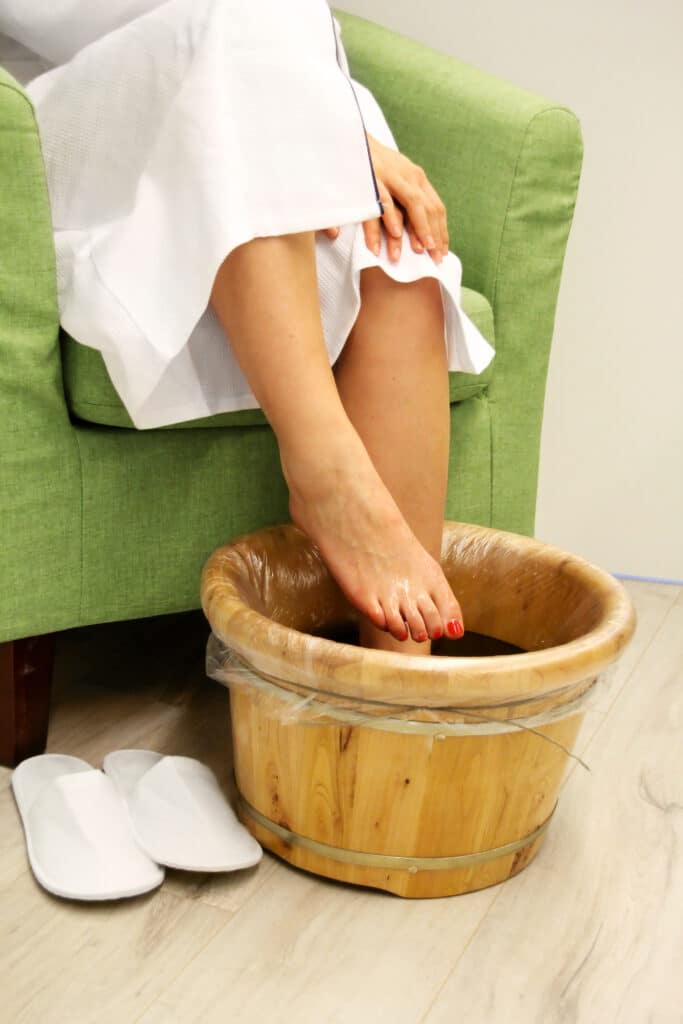
Apple cider vinegar has shown antifungal properties against Candida species, suggesting its potential use in treating certain fungal infections. However, there is no direct evidence that it effectively cures toenail fungus.
While some individuals may find relief with vinegar foot soaks, it is vital to explore other proven treatment options for persistent cases. These may include over-the-counter antifungal medications, prescription creams, or oral antifungal medications prescribed by a healthcare professional, like a podiatrist.
In conclusion, while apple cider vinegar definitely fights fungal infections, its effectiveness in curing or treating toenail fungus however remains technically unproven. It may be worthwhile to explore various treatment options, and always consult a healthcare professional for guidance on appropriate interventions when faced with stubborn or severe cases of toenail fungus.
Frequently Asked Questions
Can you apply Apple Cider Vinegar directly to toenail fungus?
Yes, you can apply apple cider vinegar directly to toenail fungus with a cotton swab or ball.
Does Apple Cider Vinegar fix toenail fungus?
Yes, there are many testimonies that the proven fungal-fighting-power of ACV fixes toenail fungus.
How long does it take for Apple Cider Vinegar to cure toenail fungus?
That totally depends on how severe your case of toenail fungus is and whether you are doing all of the other necessary steps to control and create an environment hostile to ongoing fungal growth.



